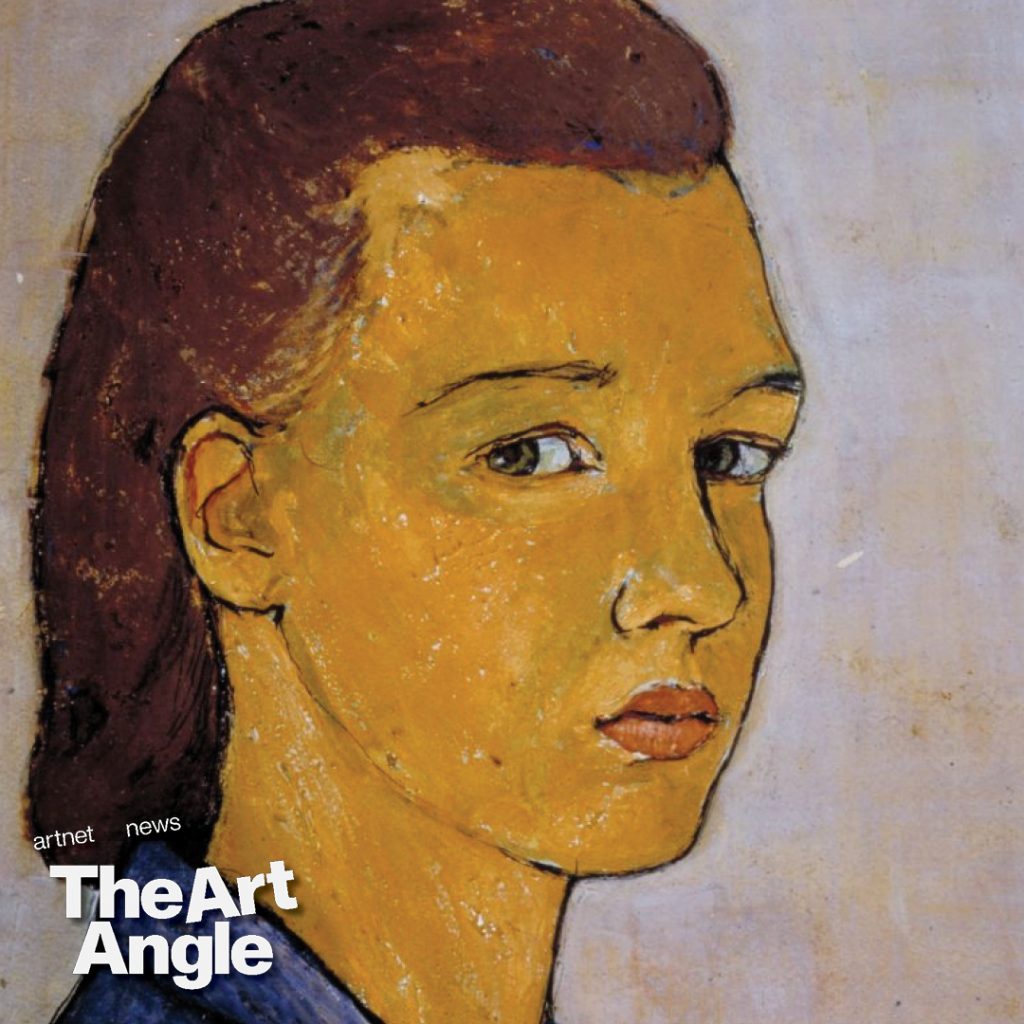The Art Angle
The Art Angle Podcast: The Triumphant, Tragic Life of Nazi-Era Artist Charlotte Salomon
Curator Irene Faber joins the show to discuss the upcoming exhibition of "Charlotte Salomon: Life? or Theater?" at the Lenbachhaus in Munich.

Curator Irene Faber joins the show to discuss the upcoming exhibition of "Charlotte Salomon: Life? or Theater?" at the Lenbachhaus in Munich.

Artnet News

Welcome to the Art Angle, a podcast from Artnet News that delves into the places where the art world meets the real world, bringing each week’s biggest story down to earth. Join us every week for an in-depth look at what matters most in museums, the art market, and much more, with input from our own writers and editors, as well as artists, curators, and other top experts in the field.
All around Europe, there are small brass bricks inlaid into the ground before the front doors of apartment buildings and houses. These bricks are like a decentralized memorial—they are known as Stolpersteine—which means stumbling stones—and engraved on each one is the name of a citizen who was persecuted or exterminated by the Nazis during World War II.
At an apartment building in Berlin that stands at Wielandstrasse 15, you will find the name of Charlotte Salomon on one of these stumbling stones. As it says on the little brass brick, she was born in 1917 here; she fled Germany to France in 1939; she was interned at a French concentration camp in Drancy; she was deported and murdered in Auschwitz in 1943.
Charlotte was also a visionary young artist, and she created a hugely ambitious work of art called Life or Theater. Made in just over a year while living in exile in France, Life or Theater consists of more than 1,000 individual gouache paintings, sectioned into three acts.
It is an artwork that defies easy categorization. It is something like an autobiography, but also not quite. There are characters that are just like her own family and friends, but their names are slightly changed. There is music that is meant to accompany her vividly painted scenes, which tell the story of her coming of age as a young woman and an artist.
The story shows what played out on Wielandstrasse in Berlin as the Nazis rose to power; the persecution of her family; the death of her mother from suicide, and later her grandmother. It tells about her suffering in exile, it discusses a murder. It also captures the birth of a brilliant artist who finds a lifeline in making art. It is hard to neatly summarize everything Life or Theater addresses—but as Charlotte put it herself, the piece is “something crazy special.” Not only is the work picturesque in the way it is painted and formally ground-breaking, Charlotte managed to achieve something deeply intimate and personal but also universal with this work. She gave it to a friend for safekeeping before she was taken to Auschwitz and it survived the war and is now in the possession of the Jewish Historical Museum in Amsterdam.
People do not seem to be as aware of Salomon as they should be giving the pioneering, avant-garde nature of this artwork. On the occasion of an upcoming exhibition of Life or Theater at the Lenbachhaus in Munich, Artnet News’s Kate Brown was joined by the show’s curator Irene Faber, who is also the curator of collections at the Jewish Historical Museum in Amsterdam, and an expert on Charlotte’s life and art.
Listen to more episodes:
The Art Angle Podcast: Hito Steyerl on Why the Metaverse Has Already Failed
The Art Angle Presents: How Three Artists Envision What a Goddess Means Today
The Art Angle Podcast: Hilma af Klint Pioneered Abstract Art. But That Is Only Part of Her Story
The Art Angle Podcast: What Is Afrofuturism, and Why Is It So Relevant Today?
The Art Angle Podcast: Marc Spiegler on the Evolution of the Art Business (and Life After Art Basel)
The Art Angle Podcast: Pussy Riot’s Nadya Tolokonnikova on Art, Activism, and Vladimir Putin
The Art Angle Podcast: What Can the Art World Learn From an Occult Practitioner?
The Art Angle Podcast: 4 Predictions on How the Art Industry Will Transform in 2023